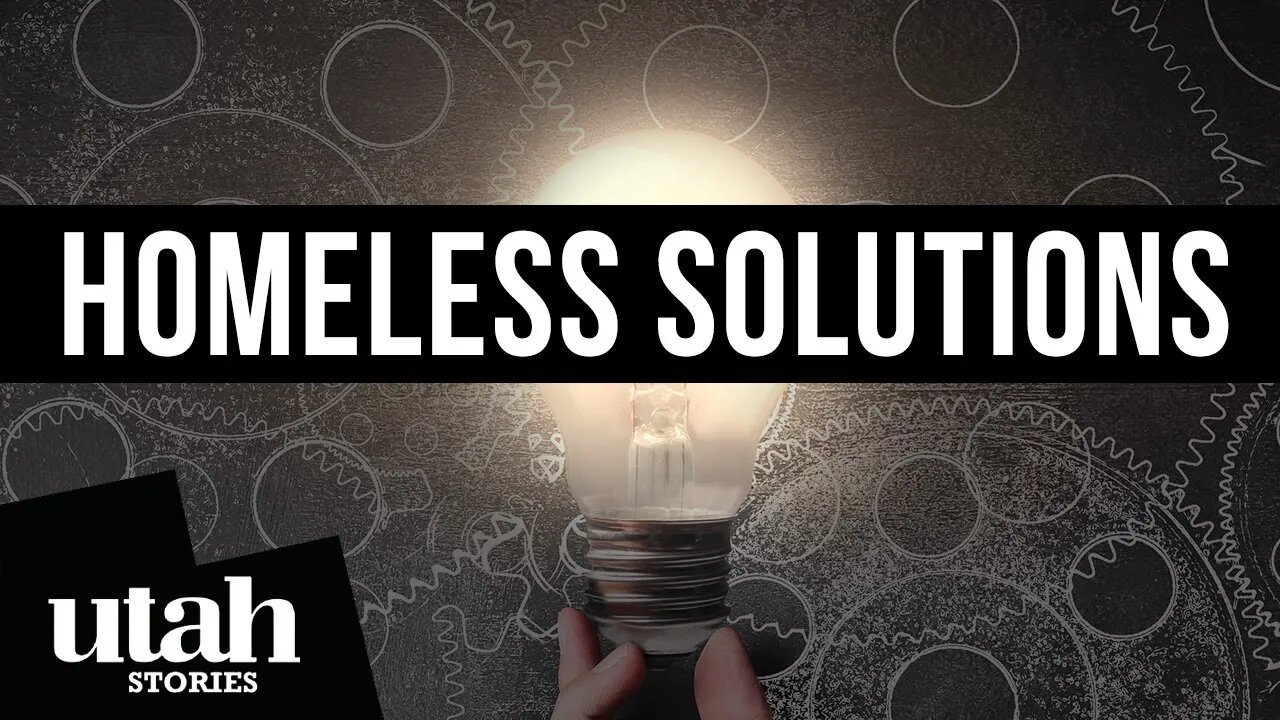Premium Only Content

Homeless Solutions: Work | Accountability | Dignity | Switch Point | Carol Hollowell
Why Carol Hollowell is determined to reduce the homeless population problem in Utah by offering more trust and compassion in exchange for requiring that tenants work.
Carol Hollowell tells Utah Stories, “One day I saw this man in a wheelchair, and I stopped and I decided to ask him, “Why are you homeless? Why don’t you tell me your story?”
Ray had lost his wallet five years earlier due to a burglary. Hollowell learned that Ray had also suffered from a traumatic brain injury and he couldn’t process some of those basic problem-solving skills necessary to get a new ID. But he was able to survive on the streets because he still had his debit card that had his disability funds. But without an ID, he couldn’t get into any type of housing, Hollowell learned.
Hollowell decided to take on Ray’s case, telling him, “I’m going to get you housed, and I’m going to solve your problem, today.” Ray was able to get housed within seven hours and even get a haircut and his long gnarly nails trimmed within that time. “Ray stayed successfully housed for the next five years,” says Hollowell, until he passed away from Covid two years ago.
In 2014 Hollowell started a new housing program called Switchpoint operating under the theory “If you can stop and meet an individual where they are at and figure out what are the barriers that have kept them homeless, then you can get them off the streets.” But this solution requires the basic component of compassion. Something that has been lacking in Salt Lake City’s current policy of abatements using Police and bulldozers to move the homeless. And under the current resource center model which requires heavy security and scanners because leaders believe that these components are required. Hollowell disagrees.
Hollowell says that if you met Ray and never learned his story, one might assume that he just wants to be homeless. He had been arrested 63 times for the same thing of public intoxication and sleeping behind the library. “But nobody asked him (or bothered to find out) —Why?”
Based on this effort in finding out why Ray was homeless, Hollowell found that there was something fundamentally missing from the current homeless and housing model and she made it her purpose to change things. Switchpoint was based on the idea of using counselors to figure out an action plan to get individuals into stable housing.
One of the things that really hit me is that I want my residents to feel like they have dignity and they have value. One major component to Switchpoint’s model, which numerous unsheltered individuals have told Utah Stories is the reason why they will not stay in the current homeless resource centers– is the absence of security checks upon arrival. “And I just don’t feel like they are safe.” Jamie Draper told Utah Stories who have been camping along the Jordan River for the past four years.
Switchpoint has done away with searching everyone when they come in. “We are expecting more out of them.” In exchange for offering their tenants, more dignity Switchpoint expects everyone at their residence to have a job. If they are unable to get a job in the outside world due to some disability, psychological issue, or getting over an addiction, they are assigned a job within the facility. “Everybody works.” Is the model, and that way “everyone takes ownership over the facility.” “You are not going to get kicked out, but you need to meet with a case manager every week to develop an action plan.”
Visit UtahStories.com for more
Subscribe to Utah Stories' weekly e-newsletter to get updates on the biggest issues facing Utah's Growth
-
 LIVE
LIVE
LFA TV
13 hours agoLFA TV ALL DAY STREAM - WEDNESDAY 9/3/25
812 watching -
 19:44
19:44
Clownfish TV
12 hours agoMedia Blames MAGA for Literally Everything Now... | Clownfish TV
8755 -
 6:39
6:39
DropItLikeItsScott
3 hours agoLocked In with the AIMWIN PE320 / The Red Dot That Won’t Quit
14 -
![PROSECUTOR PIRRO: Massive Drug Seizure Exposes China-Cartel Precursor Chemical Route [EP 4704]](https://1a-1791.com/video/fww1/c2/s8/1/O/H/Y/e/OHYez.0kob.2-small-PROSECUTOR-PIRRO-Massive-Dr.jpg) LIVE
LIVE
The Pete Santilli Show
1 hour agoPROSECUTOR PIRRO: Massive Drug Seizure Exposes China-Cartel Precursor Chemical Route [EP 4704]
100 watching -
 1:09:48
1:09:48
Kim Iversen
3 hours agoEPSTEIN VICTIM: We Have The Names. We'll Make The List.
32.9K61 -
 LIVE
LIVE
The Jimmy Dore Show
2 hours agoTrump’s HUGE About-Face on the COVID Vaxx! Epstein Victims Demand Justice In DC! w/ Mary Holland
8,789 watching -
 DVR
DVR
The Mel K Show
2 hours agoLive Q&A With Mel K 9-3-25
6.58K1 -
 LIVE
LIVE
Quite Frankly
6 hours agoOccult Pop Culture & The Anne Heche Mystery | Christopher Knowles 9/3/25
628 watching -
 LIVE
LIVE
The Mike Schwartz Show
3 hours agoTHE MIKE SCHWARTZ SHOW Evening Edition 09-03-2025
4,220 watching -
 1:06:42
1:06:42
TheCrucible
3 hours agoThe Extravaganza! EP: 31 (9/03/25
79.8K6